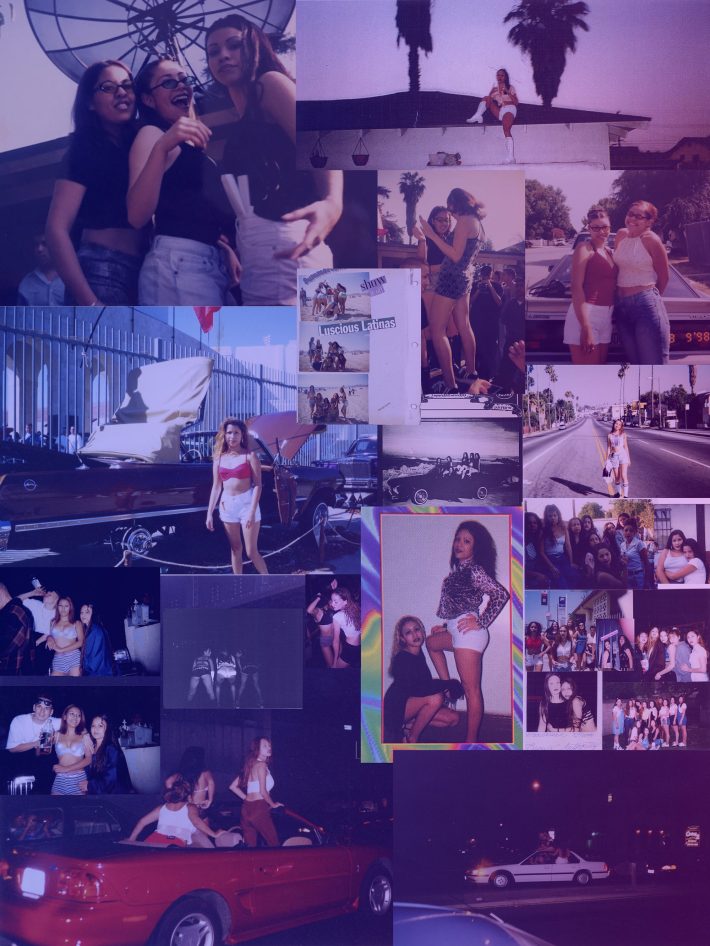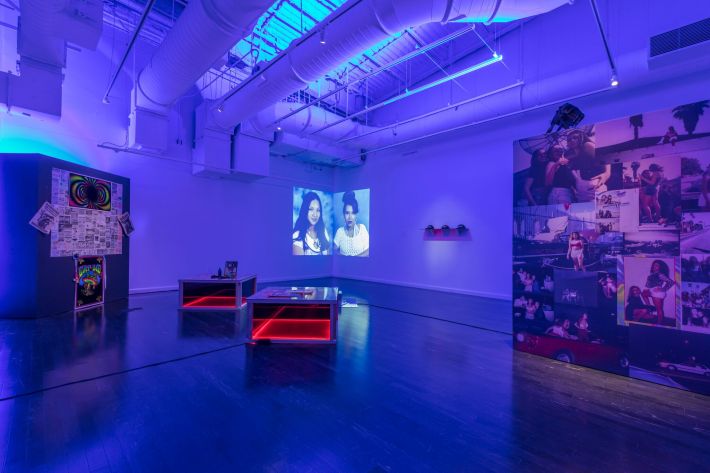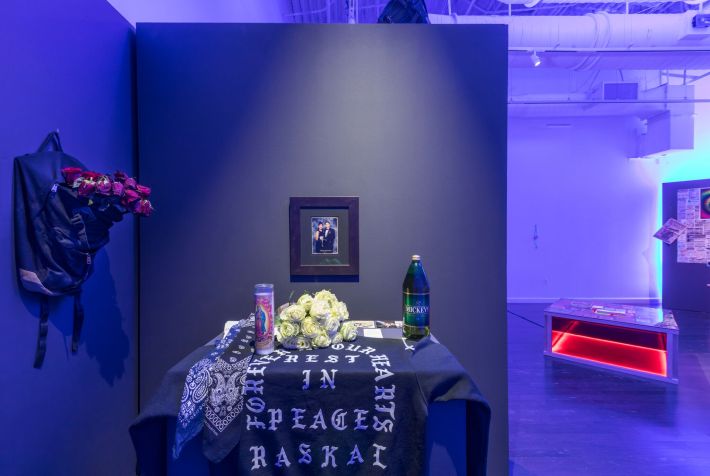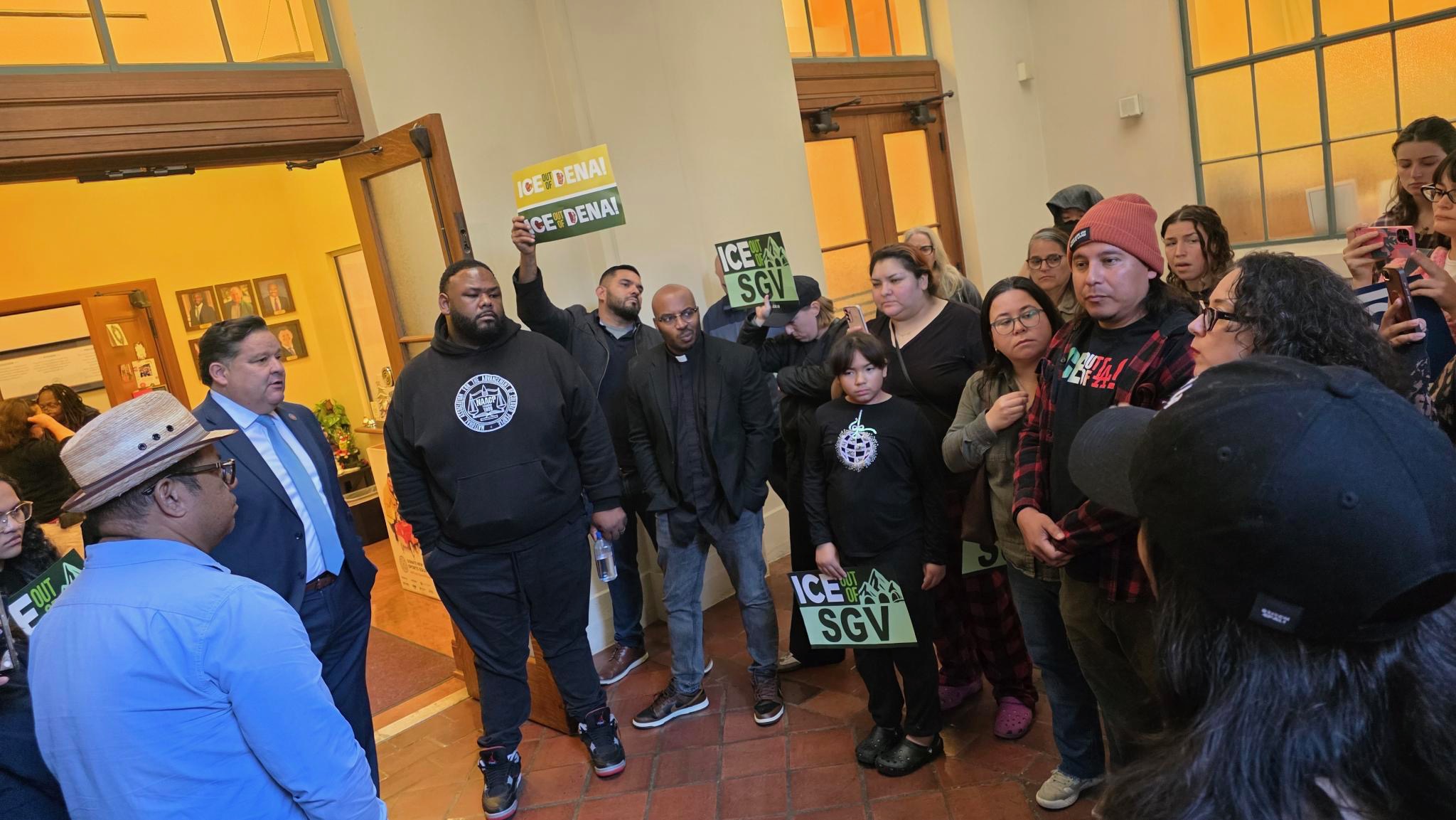[dropcap size=big]B[/dropcap]efore you see the Echoes of a Collective Past exhibit, you hear it. A continuous bass thump reverberates down the hallway. Reminiscent of those late nights in high school, when you’re trying to find the party, but don’t know exactly where it is, so what do you do? You roll down your window and listen.
Stepping inside the gallery you realize this nostalgic nod is no accident. Dim blue lighting and collaged photos and flyers trigger memories of those long hours, meticulously decorating your bedroom. Those days when your room was the only place in the world you felt was truly yours – your refuge.
RELATED: Support Stories Like This & Become a Member of L.A. Taco Today!

Rosales herself was a member of a party crew called Aztec Nation.
Artist Guadalupe Rosales references these private spaces of teenagers with her detail-specific presentations of letters, flyers, video, photography, and other bits of 90s ephemera in the her first solo show, currently up at Vincent Price Museum at East Los Angeles College.
Using color, light and space her displays become geometric monuments, memorializing real people, from a real era. These were the industrious and fun-loving teens from Los Angeles’s communities of color. They formed groups called party crews, with names like Deep Level, Playful Lovers, Brown Pride, Firme Hinas and Asid Slaves. Rosales herself was a member of a party crew called Aztec Nation. Some of the materials displayed here are from her personal archive, but much of it was also donated from others who shared these experiences.
RELATED: Interview with Guadalupe Rosales, Creator of 'Veteranas and Rucas'

These collaged photos show Chicanas confidently taking up space in L.A.
While this installation at the Vincent Price Art Museum is her first solo show, Rosales has been developing a community-sourced archive since 2016 through her Instagram accounts @Veteranas_and_Rucas and @MapPointz. The former asserts a female perspective of Chicanx history from the postwar era to Generation X. The later focuses on the aforementioned party crew scene, which was a subculture largely left to obscurity before Rosales stepped into the archival world.
Like her work in the digital sphere, female voices ring loud in the installation itself. The first thing you see is in fact a wall dedicated to their image. These collaged photos show Chicanas confidently taking up space in L.A., whether they are mobbing deep in a convertible or trying to build a pyramid on the beach. One photo captures two friends dancing intimately almost awkwardly. Maybe unsure of their onlookers, or their bodies, but feeling safe enough to express their sexuality how they see fit. Another image shows two friends posing closely, one friend clutching onto the other as if she were her anchor. Their names “Woodstock” and “Flaca” of Brown Authority scrawled beautifully in ballpoint pen at the bottom of the polaroid.

She transforms what could’ve been a mere exhibition of archival materials into a glowing homage to an era.
The two-channel video projection keeps with the female-centric perspective. You see women enjoying themselves in various ways, cruising, partying and even being overtly sexual. In some of the video footage women are shown proudly flaunting their booty shorts, seeming to own the fact that they are sexual beings. An affirmation that is still relevant almost twenty-five years later when slut-shaming is still more often than not a default reaction to women’s sexual expression.
Connecting to this idea of empowerment and sexuality are Rosales’ custom display cases that purposefully resemble go-go boxes. She transforms what could’ve been a mere exhibition of archival materials into a glowing homage to an era. Under the red neon plexiglass are rows of party flyers and on top are neatly arranged period pieces that you might’ve seen on someone’s dresser back in the day, a framed photo of friends, CoverGirl foundation, letters from a friend or family member in prison. By placing this all within the context of a go-go box Rosales creates a metaphorical platform for these disregarded histories.

A personal and resonant reminder of the surrounding violence communities of color experienced during the 90s.
[dropcap size=big]I[/dropcap]n the corner of the gallery you’ll find an altar dedicated to Rosales’ cousin Ever Sanchez who was fatally stabbed during a gang truce party in 1996. A crew neck sweater draped over the front reads, “Forever in Our Hearts, Rest in Peace Raskal.” Above is his high school prom portrait a handsome guy, smiling brightly. A personal and resonant reminder of the surrounding violence communities of color experienced during the 90s, which did not necessitate gang affiliation.
By placing the unacknowledged perspectives of 90s L.A. youth, and particularly women, at the forefront, the installation is both a declaration of their historical relevance and an opportunity to engage in collective remembrance; a space to reminisce and reframe, an installation that is truly a sanctuary.
Viewing of Echoes of a Collective Past is free and will be up at the Vincent Price Art Museum until March 23, 2019. More information here.
RELATED: Cheech Marin’s Chicano Art Collection Will Get a Permanent Home in Riverside







